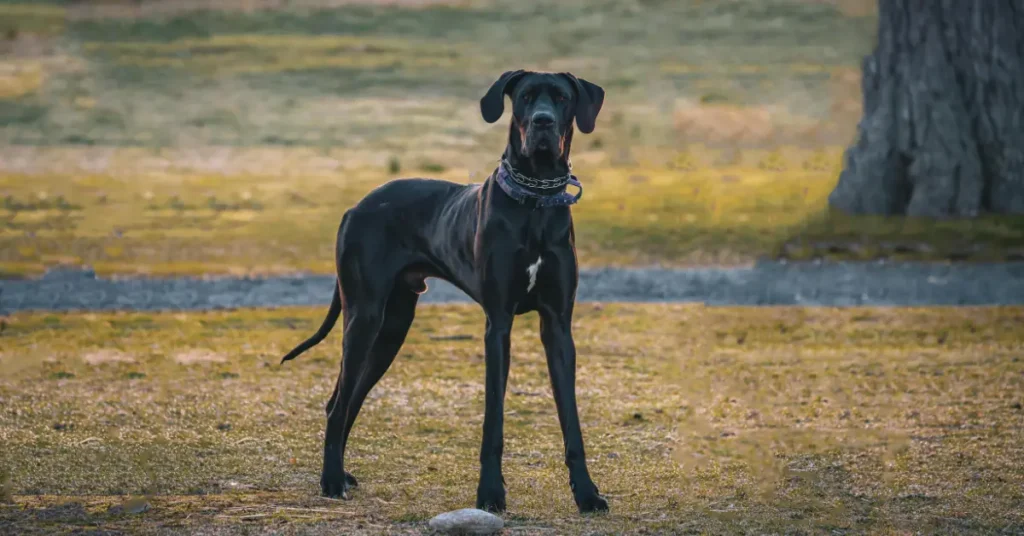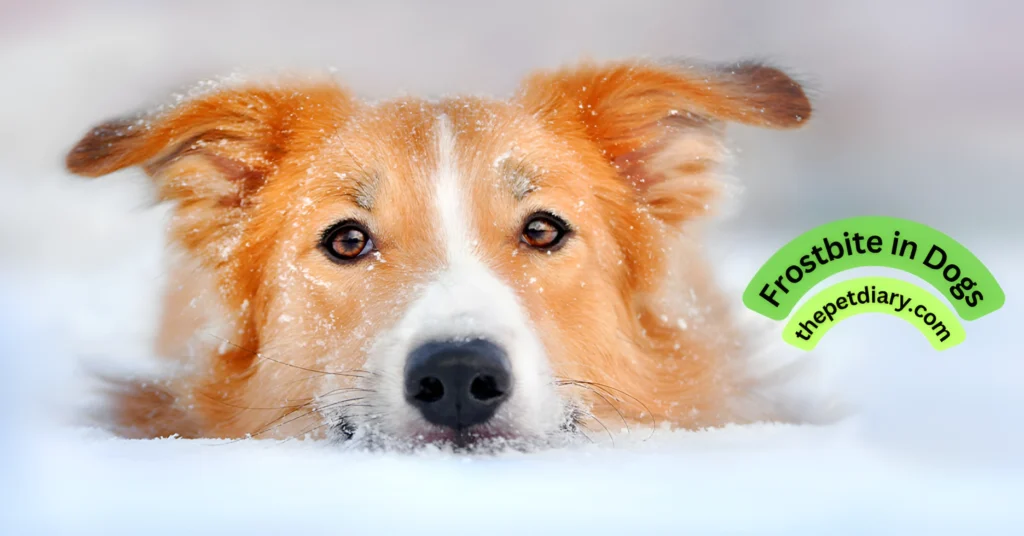Few dogs inspire as much awe and admiration as the Great Dane. Known as the “Apollo of Dogs,” this giant breed blends elegance, strength, and a surprisingly gentle nature. Whether you are a prospective owner researching Great Dane puppies or fascinated by their majestic presence, this guide covers everything from health and grooming to unique color patterns and popular mixes.
Statistics |
Dog Breed Group |
| Working Dogs |
Height |
|
26 to 34 inches tall at the shoulder
|
Weight |
|
100 to 175 pounds
|
Life Span |
| 8 to 10 years |
Introduction to the Great Dane
The Great Dane originated in Germany hundreds of years ago, bred as a boar-hunting dog and estate guardian. Despite their intimidating size, these dogs are famously affectionate, often described as “gentle giants.” A well-socialized Great Dane is friendly, dependable, and patient with children.
Key personality traits include:
-
Calm temperament indoors but playful outside
-
Loyal and protective without unnecessary aggression
-
Strong desire to bond closely with family members
Because of their size and sweet nature, Great Dane dogs and puppies require thoughtful training and early socialization to ensure they grow into confident, well-mannered companions.
Physical Characteristics/ Great Dane Guide:
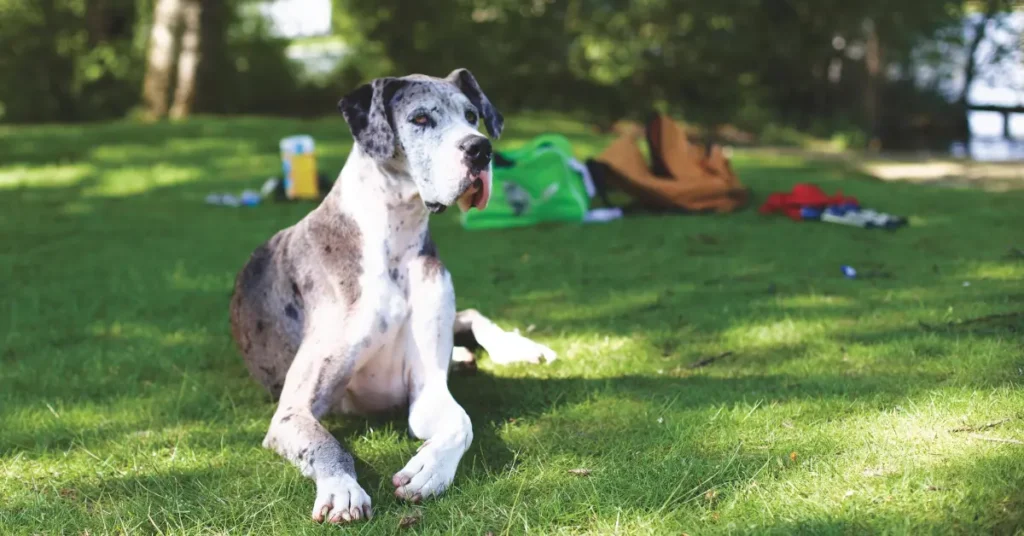
Great Dane Size and Growth Great Dane Guide
When it comes to sheer stature, the Great Dane’s size is legendary. Adult males typically stand 30–34 inches at the shoulder and can weigh up to 175 pounds, while females are slightly smaller at 28–32 inches tall and 110–140 pounds.
Growth is rapid during the first year, so owners should monitor nutrition carefully. Overfeeding in the puppy stage can lead to joint problems later in life.
Great Dane Colors and Patterns /Great Dane Guide
The breed standard recognizes several striking coats:
-
Fawn: A warm golden body with a black mask
-
Black: The sleek elegance of the black Great Dane
-
Blue: The steel-gray beauty of the blue Great Dane
Beyond these classics, unique patterns draw extra attention:
-
Harlequin Great Dane: white base with irregular black patches
-
Merle Great Dane and blue merle Great Dane: mottled, marbled coats
-
Brindle Great Dane: tiger-striped pattern
Responsible breeders pay close attention to Great Dane breeding colors, as mixing certain genes can cause health issues or disqualify a dog from show standards.
Lifespan & Health/ Great Dane Guide:
Great Dane Life Expectancy
One of the breed’s few drawbacks is its relatively short lifespan. On average, the life expectancy of Great Dane dogs is about 8–10 years, though some live longer with excellent care. Owners frequently ask, “How long do Great Danes live?” and while genetics play a role, lifestyle factors such as diet, exercise, and regular veterinary visits are critical.
Common health concerns include:
-
Bloat (gastric torsion): A life-threatening stomach twist
-
Hip and elbow dysplasia
-
Heart conditions like dilated cardiomyopathy
Great Dane Health Overview Great Dane Guide
| Health Concern | Key Symptoms | Prevention Tips |
|---|---|---|
| Bloat | Rapid abdominal swelling, restlessness | Feed smaller meals, avoid heavy exercise after eating |
| Hip Dysplasia | Limping, stiffness | Controlled growth diet, regular vet screenings |
| Dilated Cardiomyopathy | Fatigue, fainting | Annual heart checks, balanced nutrition |
Regular veterinary checkups, a high-quality diet, and moderate exercise help maximize your Great Dane’s life expectancy.
Caring for a Great Dane
Daily care for a giant breed is different from that of smaller dogs. Nutrition, exercise, and grooming all require special attention.
-
Feeding & Nutrition: Choose the Great Dane dog food, A large-breed formula with balanced protein and controlled calories to protect growing joints.
-
Exercise Needs: Despite their size, Great Danes need only moderate daily activity, such as brisk walks or gentle play sessions.
-
Grooming Tips: Their short coat needs weekly brushing and regular nail trimming.
Daily Care Checklist/ Great Dane Guide:
| Activity | Frequency | Notes |
|---|---|---|
| Feeding | 2–3 times/day | Use elevated bowls to reduce the risk of bloat |
| Brushing | Weekly | Removes loose hair and distributes natural oils |
| Nail Trimming | Every 3–4 weeks | Prevents splitting and discomfort |
| Vet Checkup | Twice yearly | Essential for early detection of health problems |
Proper care not only improves quality of life but also supports the Great Dane’s impressive but delicate physique.
Great Dane Puppies/ Great Dane Guide
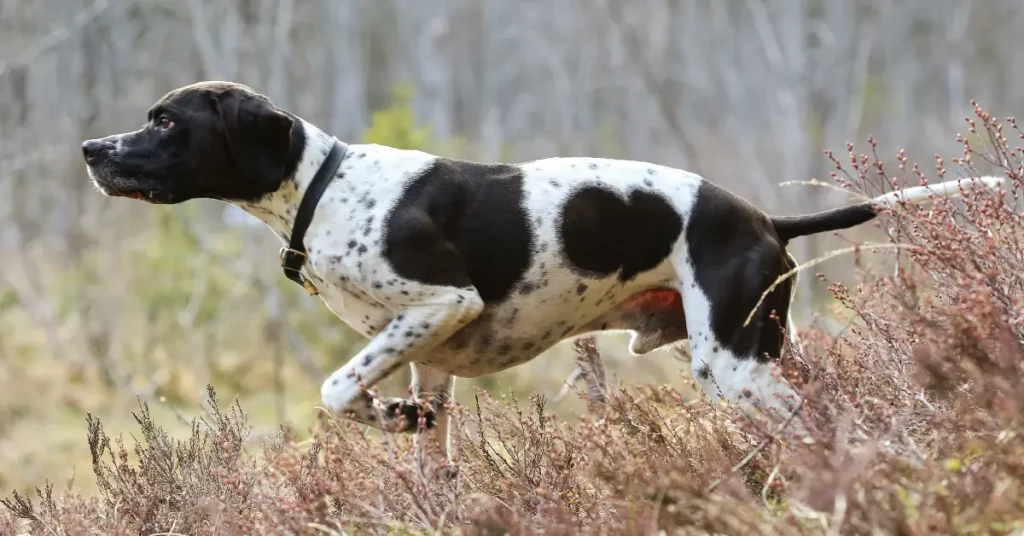
If you plan to buy a Great Dane puppies, select reputable Great Dane breeders or trusted rescues. Search phrases like Great Dane breeders, breweries near me can help locate ethical sources. Reputable breeders provide health clearances and socialization from an early age.
Tips for bringing a puppy home: Great Dane Guide
-
Socialize early: Introduce them to different environments and people.
-
Crate training: A sturdy Great Dane dog crate provides safety and helps with housebreaking.
-
Nutrition: Use a growth-appropriate diet to prevent rapid bone growth.
Popular Great Dane Mixes
Crossbreeding has created some remarkable hybrids that combine the Great Dane’s gentle nature with traits of other popular breeds.
Great Dane Golden Retriever Mix
This designer breed combines the Golden Retriever’s loving personality with the Great Dane’s majestic size. They are gentle, loyal, and need regular exercise and socialization.
Labrador and Great Dane Mix
Known as the Labradane, this mix is friendly, intelligent, and energetic. Their large frame and affectionate nature make them excellent family companions.
Great Dane Dalmatian Mix
The Great Dane Dalmatian mix stands out with a tall build and striking spotted coat. Daily activity and early training help keep this playful dog happy and healthy.
Chihuahua Great Dane Mix Breed
A rare and unique cross, the Chihuahua Great Dane mix can vary greatly in size and looks. They require patient training and consistent care to thrive.
Boxer Great Dane Mix
Also called the Boxane, this hybrid blends the Boxer’s playful energy with the Great Dane’s calm demeanor. They are loyal, protective, and enjoy an active family lifestyle.
Great Dane Mastiff Mix
The Great Dane Mastiff mix, or “Daniff,” is a true giant. These dogs inherit the Mastiff’s protective instincts and the Dane’s affectionate temperament.
Cane Corso Great Dane Mix
The Cane Corso Great Dane mix blends the muscular build of the Italian Mastiff with the Dane’s elegant frame, confident, protective, and family-oriented.
Pitbull Great Dane Mix
The Pitbull Great Dane mix—often called the Great Danebull is energetic, loyal, and slightly smaller, typically 60–100 pounds.
Great Dane Poodle Mix
The Great Dane Poodle mix, also known as a Great Dane Poodle or “Great Danoodle,” pairs Poodle intelligence with Dane size, sometimes sporting a low-shedding coat.
Each of these mixes requires space, patient training, and a commitment to giant-breed care.
Housing & Equipment
Owning a Great Dane means making home adjustments to accommodate their size and comfort.
-
Great Dane crate or Great Dane dog crate: extra-large (around 54 inches) for safe training and travel.
-
Indoor Living: Despite their size, Danes thrive indoors and need soft bedding and room to stretch.
-
Traveling: For long trips, many owners use Great Dane trailers or spacious vehicles to keep their dog secure.
Cost & Ownership
Before you buy a Great Dane puppy, understand the financial commitment.
| Expense Category | Average Cost (USD) | Notes |
|---|---|---|
| Great Dane price (puppy) | $1,000–$3,000 | Depends on breeder reputation and pedigree |
| Annual Food | $1,200–$1,800 | High-quality large-breed food |
| Veterinary Care | $300–$700 per year | Routine exams; emergencies can cost more |
| Crate & Equipment | $200–$500 | Includes a Great Dane dog crate and large beds |
Fun Facts & Myths/ Great Dane Guide:
-
Gentle Giants: Despite their size, Danes believe they are lap dogs.
-
Record Holders: Zeus, a Dane from Michigan, once stood 44 inches at the shoulder.
-
Color Lore: Some cultures view the black Great Dane as a protector and good-luck charm.
Advanced Training & Behavior
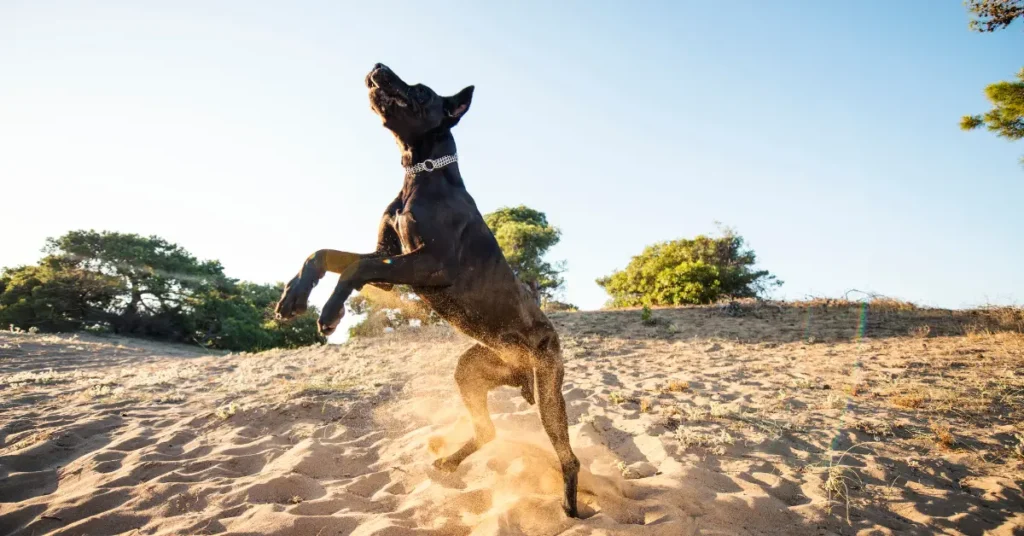
Because of their size, Great Danes require extensive training. They are intelligent and eager to please, making positive reinforcement ideal.
-
Socialization: Early exposure to people, pets, and new environments builds confidence.
-
Core Commands: Sit, stay, heel, and come are non-negotiable for safe handling.
-
Leash Etiquette: Begin early so their strength never becomes a challenge.
-
Mental Stimulation: Puzzle toys and scent games prevent boredom.
Address issues like jumping or separation anxiety with consistent, gentle guidance.
Feeding & Nutrition Plan
Nutrition strongly influences the Great Dane life expectancy.
-
Feed large-breed puppy food for controlled growth.
-
Split meals (2–3 per day) to reduce bloat risk.
-
Choose the best dog food for Great Danes with high-quality protein, moderate fat, and joint-supporting nutrients.
Sample adult plan: 4–5 cups of large breed kibble in the morning and evening, plus vegetables as healthy extras.
Seasonal & Senior Care
Great Danes are sensitive to heat and cold.
-
Summer: Walk early or late, provide shade, and watch for overheating.
-
Winter: Use coats or sweaters and keep them indoors during cold spells.
By age 6 or 7, most Danes are seniors.Great Dane Guide
-
Adjust calories and continue joint supplements.
-
Provide gentle, shorter walks and orthopedic bedding.
Planning for these changes helps maximize the life expectancy of Great Dane dogs and ensures comfort through every stage.
Conclusion of Great Dane Guide:
The Great Dane is a magnificent blend of power and gentleness, a true “gentle giant” with a heart as big as its frame. From its origins as a German hunting dog to its modern role as a loving family companion, the breed offers loyalty, affection, and striking beauty. By providing balanced nutrition, regular veterinary care, early socialization, and ample space, you can help your Great Dane thrive and enjoy a healthy life of 8–10 years or more. Whether you’re drawn to classic colors like dane dog black or blue or exploring unique mixes such as the Great Dane Mastiff mix, this remarkable dog will reward you with steadfast companionship and endless affection. Learn more at ThePetDiary.com.
FAQs of Great Dane Guide:
Q1: What is the average lifespan of a Great Dane?
Most Great Danes live about 8–10 years, though excellent care and genetics can sometimes extend that range.
Q2: How big do Great Danes get?
Adult males typically stand 30–34 inches tall and weigh up to 175 pounds, while females are slightly smaller.
Q3: Are Great Danes good family dogs?
Yes. Known as gentle, patient, and affectionate, they are wonderful with children when properly socialized.
Q4: How much does a Great Dane cost?
A Great Dane puppy usually costs $1,000–$3,000, depending on the breeder’s reputation and pedigree.
Q5: How much exercise does a Great Dane need?
About 30–60 minutes of moderate exercise daily, such as walks or gentle play, is usually sufficient.
Q6: What should I feed my Great Dane?
Choose a large-breed formula with controlled calories and high-quality protein to support joint health and prevent rapid growth in puppies.
Q7: Are Great Danes easy to train?
Yes. They are intelligent and eager to please, responding best to positive reinforcement and consistent training.
Q8: Do Great Danes get along with other pets?
When introduced properly and socialized early, Great Danes can live peacefully with other dogs and even cats.
